![]()
![]()
![]()
Use LEFT and RIGHT arrow keys to navigate between flashcards;
Use UP and DOWN arrow keys to flip the card;
H to show hint;
A reads text to speech;
22 Cards in this Set
- Front
- Back
|
ankle joint "true ankle joint" |

|
|
|
subtalar joint (talocalcaneal joint) |
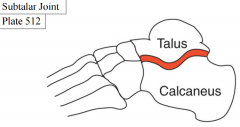
formed by the articulation of the talus with the calcaneus |
|
|
transverse tarsal joint (midtarsal joint) |
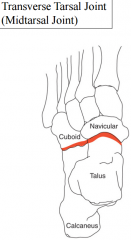
formed by the articulation of the talus & calcaneus with the navicular & cuboid |
|
|
tarsometatarsal joint |
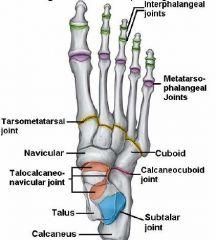
any of the three joints between the tarsal & metatarsal bones
|
|
|
superior tibiofibular joint |
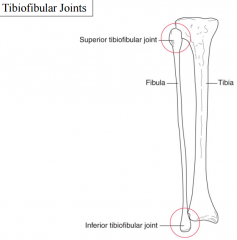
|
|
|
inferior tibiofibular joint |

|
|
|
foot joints |
![metatarsophalangeal (MTP) joints
interphalangeal (IP) joint [great toe]
proximal interphalangeal (PIP) joints [toes 2-5]
distal interphalangeal (DIP) joint [toes 2-5]](https://images.cram.com/images/upload-flashcards/82/53/12/20825312_m.png)
|
|
|
osteokinematics: "true ankle joint" (talocrural/talotibial) |
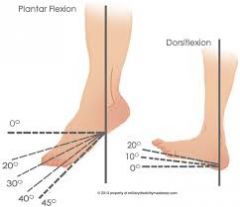
has 1 degree of freedom: dorsiflexion & plantar flexion occur in the sagittal plane |
|
|
osteokinematics:
|
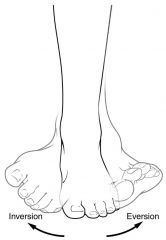
have 1 degree of freedom: inversion & eversion occur in the frontal plane |
|
|
osteokinematics: toe MTP joints |

have 2 degrees of freedom:
|
|
|
osteokinematics: toe IP joints |
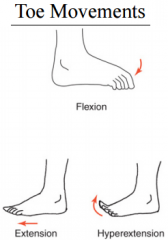
have 1 degree of freedom: flexion & extension occur in the sagittal plane |
|
|
valgus |
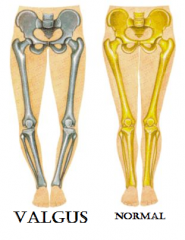
the distal end of a bone of a joint is turned away from the midline of the body |
|
|
varus |
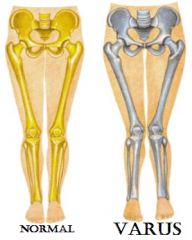
the most distal end of a bone of a joint is turned toward the midline of the body |
|
|
coxa valgus & varus |
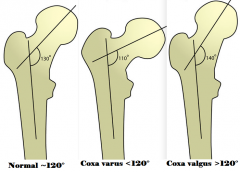
|
|
|
genu valgus & varus (knock-knees & bowlegged) |
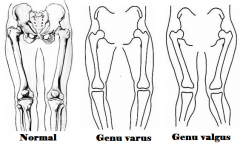
|
|
|
talipes valgus & varus |
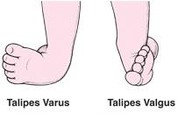
|
|
|
calcaneal valgus & varus |

|
|
|
hallux valgus |
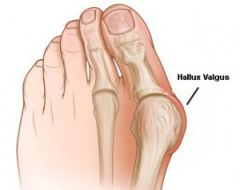
|
|
|
supination of the foot |
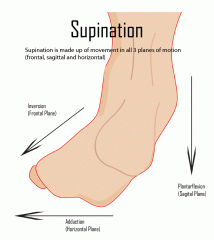
combination of plantar flexion, inversion & adduction |
|
|
pronation of the foot |
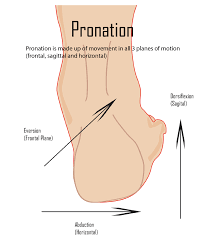
combination of dorsiflexion, eversion & abduction |
|
|
pes planus |

|
|
|
pes cavus |
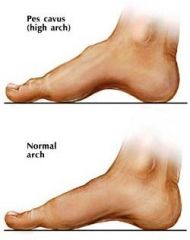
|

